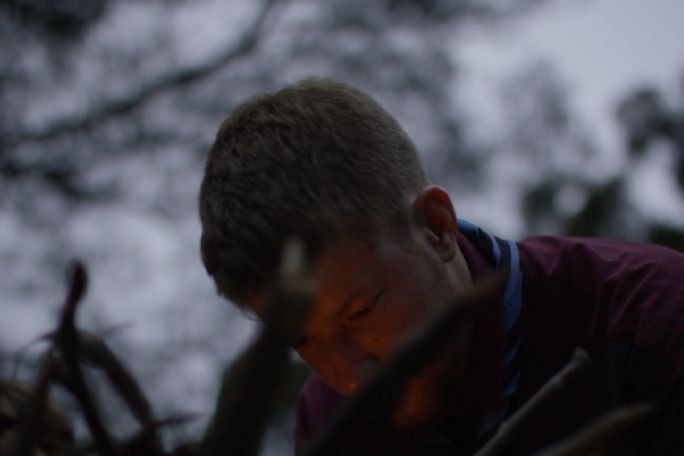Lesson summary
This lesson is part of the Aspire Generation English Unit. Students learn about the concept of ‘vision’ and examine real vision statements from local communities. They will view a TED-talk that describes how a vision for a community transformed the experiences of community members and discuss how that vision was communicated in unique ways. Students then engage in an independent activity where they reflect and consider their own vision for the future of their community or world and select a variety of techniques to communicate this vision to others and inspire them.
Learning intentions:
Students will...
- understand the concept of a vision for something better and how this can be communicated
- understand how different meaning/s can be communicated through linguistic and non-linguistic (aural, visual) communication.
Lesson guides and printables
Lesson details
Curriculum mapping
English content descriptions:
Year 9 English:
- Create imaginative, informative and persuasive texts that present a point of view and advance or illustrate arguments, including texts that integrate visual, print and/or audio features (ACELY1746)
- Use a range of software, including word processing programs, flexibly and imaginatively to publish texts (ACELY174)
- Listen to spoken texts constructed for different purposes, for example to entertain and to persuade, and analyse how language features of these texts position listeners to respond in particular ways (ACELY1740)
Year 10 English:
- Create sustained texts, including texts that combine specific digital or media content, for imaginative, informative, or persuasive purposes that reflect upon challenging and complex issues (ACELY1756)
- Use a range of software, including word processing programs, confidently, flexibly and imaginatively to create, edit and publish texts, considering the identified purpose and the characteristics of the user (ACELY1776)
- Identify and explore the purposes and effects of different text structures and language features of spoken texts, and use this knowledge to create purposeful texts that inform, persuade and engage (ACELY1750)
General Capabilities: Literacy, Personal and Social Capability, Critical and Creative Thinking, Ethical Understanding, ICT Capability
Cross-curriculum priorities: There are opportunities for students to engage with any of the cross-curriculum priorities across the scope of this unit. Direct or specific engagement with any of these can be made based on the unique attributes of the local community. Sustainability, Asia and Australia’s Engagement with Asia, Aboriginal and Torres Strait Islander Histories and Cultures
Relevant parts of Australian Curriculum English Achievement Standards:
Year 9: By the end of Year 9, students understand how to use a variety of language features to create different levels of meaning. In creating texts, students demonstrate how manipulating language features and images can create innovative texts. Students create texts that respond to issues, interpreting and integrating ideas from other texts. They make presentations and contribute actively to class and group discussions, comparing and evaluating responses to ideas and issues. They edit for effect, selecting vocabulary and grammar that contribute to the precision and persuasiveness of texts and using accurate spelling and punctuation.
Year 10: By the end of Year 10, students explain different viewpoints, attitudes and perspectives through the development of cohesive and logical arguments. They develop their own style by experimenting with language features, stylistic devices, text structures and images. Students create a wide range of texts to articulate complex ideas. They make presentations and contribute actively to class and group discussions, building on others’ ideas, solving problems, justifying opinions and developing and expanding arguments. They demonstrate understanding of grammar, vary vocabulary choices for impact, and accurately use spelling and punctuation when creating and editing texts.
Unit of work: La Trobe University – Aspire Generation – English.
Time required: 90 mins.
Level of teacher scaffolding: Medium – facilitate class discussion.
Resources required
- Student Worksheets – one copy per student OR computers/tablets to access the online worksheet
- Device capable of presenting a video to the class
- Internet access
- Community Visions Factsheet
- My Community Y-Chart
Skills
This lesson is designed to build students’ competencies in the following skills:
- Communication
- Community engagement
- Creativity
- Cultural understanding
- Ethical understanding
- Global citizenship
Additional info
This lesson supports La Trobe University’s Aspire Generation initiative, which empowers students to drive change through community engagement, volunteerism and leadership opportunities.


Welcome back!
Don't have an account yet?
Log in with:
By signing up to Cool.org you consent and agree to Cool's privacy policy to
store, manage and process your personal information. To read more, please see
our privacy policy here(Opens in new tab).
Create your free Cool.org account.
Many of our resources are free, with an option to upgrade to Cool+ for premium content.
Already have an account?
Sign up with:
By signing up to Cool.org you consent and agree to Cool's privacy policy to
store, manage and process your personal information. To read more, please see
our privacy policy here(Opens in new tab).